Artichokes, one of the oldest cultivated vegetables in the world, come on the list of exotic vegetables in India. This plant can be easily grown at home, regarded as a delight for taste buds in the culinary world. Even from trusted seed companies, Artichoke seeds will not always grow true to the variety on seed packets. Seeds are probably your only option if you live in an area where Artichokes can’t be grown as perennials.
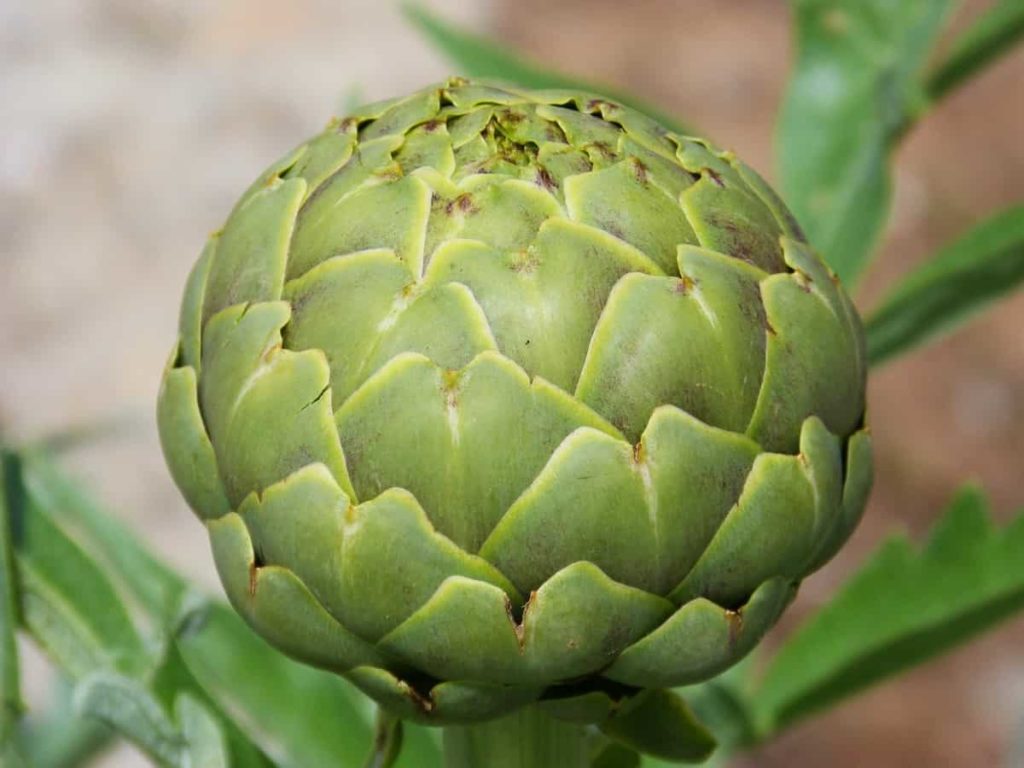
Usually, Artichokes are grown for their edible flower buds and harvested before flowers bloom. The leaves of Artichokes are silver-green with a long, arched shape. Though they look soft, the leaves can be quite prickly. The stem of the plant is thick and fleshy. Artichokes are planted at different times, depending on the climate. Where they have grown annually, you must plant them in the spring. In warmer areas where they survive as perennials, they are often planted as seeds as young plants (or transplants) in late summer or mid-autumn.
How to grow Artichokes from seed to harvest
How long do Artichokes take to grow from seed?
- It is not difficult to grow Artichokes, and with proper planting, watering, and pruning, you can enjoy a rich crop of edible chokes. Artichoke is the best addition to your vegetable garden with tall, silver leaves and beautiful flowers.
- Artichokes from the seed will produce edible buds in about 160 to 180 days. From the root divisions, edible buds will arrive in 50 to 100 days. Artichokes can be grown as annuals from seeds, but the most productive Artichokes are perennials grown from crowns. The perennial Artichoke plant can survive for 5 to 15 years. The first center bud matures fast, followed by side buds for the rest of the growing season.
- Artichoke plants are slow growers; they can take anywhere from spring and summer to 85 to 120 days to produce flowers. Also, most Artichoke plants will not start producing flowers until their second year.
How long does it take for Artichoke seeds to sprout?
- Artichokes won’t bloom until the second year, which is fine if you plan to grow them biennially or perennially, but unpleasant in cold climates. To grow them as annuals, you need to vernalize your start by keeping them at a temperature of 2°C to 10°C for at least ten days.
- Start seeds indoors in the late winter, 8 to 10 weeks before the last frost date. Sow two seeds per pot at a depth of ¼ inch. Keep moist in a warm place until the seeds germinate.
- Put seeds in an air-locked container in the refrigerator with a small amount of slightly moist peat moss before starting your Artichoke seeds. Cool, wet conditions will help your seeds that it’s spring, and result in better, more germination.
- Artichokes can be started with seeds, with root shoots taken from growing plants, or with dormant roots. Start seeding indoors in late winter or early spring, about 8 to 10 weeks before planting outside. Before sowing them in trays or pots, soak the seeds in warm water.
- Sow 1/4 inch deep in the seed start mix. The soil temperature must be 16°C to 26°C for seeds to germinate, so a heated seed starting mat can be used to ensure proper temperature. The seeds will germinate in 10 days to three weeks.
- You should transplant when the plants are 8 to 10 inches long, the risk of frost has passed, and soil temperature reaches 16°C or more. You will need to harden them in a cold frame for a few days.
In case you missed it: Growing Jerusalem Artichokes in Containers
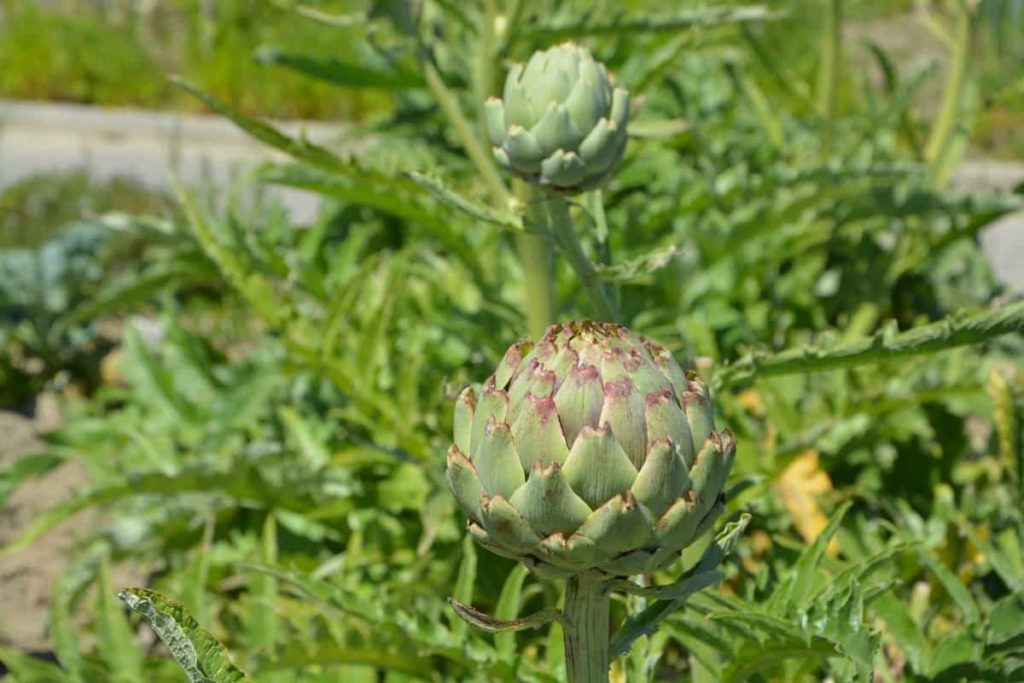
How many Artichokes do you get from 1 plant?
The plants are highly ornamental with spiky, silver leaves and flower stalks that are 3 to 5 feet long. Plant Artichokes in vegetable gardens or flower borders; it is an excellent plant for edible landscaping. Most varieties produce 6 to 8 Artichokes per plant, but some can produce up to 10. The main harvest is usually in April and May. Choose buds for their size, compactness, and age. All buds of appropriate size should be harvested by cutting the stem 2 to 3 inches below the base of the bud.
Are Artichokes easy to grow from seed?
Artichokes are easy to grow from seeds that started indoors about 12 weeks before the last expected spring frost. You can start Artichoke seeds in the greenhouse in February or under fluorescent light, planted in 4-inch containers about 1/4 inch deep. Artichokes are tap-rooted plants that grow deep roots, even as seedlings. You should plant the seeds in a deep container.
What month do you plant Artichokes?
- Where they have grown as annuals, they must be planted in the spring. In warmer areas where they survive as perennials, they are often planted as seeds as young plants (or transplants) in late summer or mid-autumn. They usually need 85 to 100 days to reach the crop.
- Cover and sow Artichoke seeds in late February and early March. They can also be sown directly in garden soil from April to July.
Do Artichoke plants need full sun?
- Artichokes also thrive in partial shade. They also need light, fertile, well-drained soil; sandy or loams are ideal. The two reasons Artichoke plants fail are summer drought and water-logged winter soils. To grow Artichokes as perennials, know that most varieties survive only about -5 °C, so if you want to grow them as a perennial, you’ll need to protect them during the winter months. Artichokes are best grown in damp weather, with cold summer temperatures and mild winters. Artichokes are perennials that can survive up to 6 years in mild winter areas.
- Jerusalem Artichokes will perform best in full sunlight but can still produce a good crop in light shade. Keep in mind that they become very tall, so place them at the back of vegetable beds. This means they won’t cover other crops. However, globe Artichokes need all the sun that can be mustered. Artichoke plants need at least six hours of direct sun a day at the peak of summer. Rich, well-drained soil is ideal.
In case you missed it: Growing Artichokes in Pots, Containers
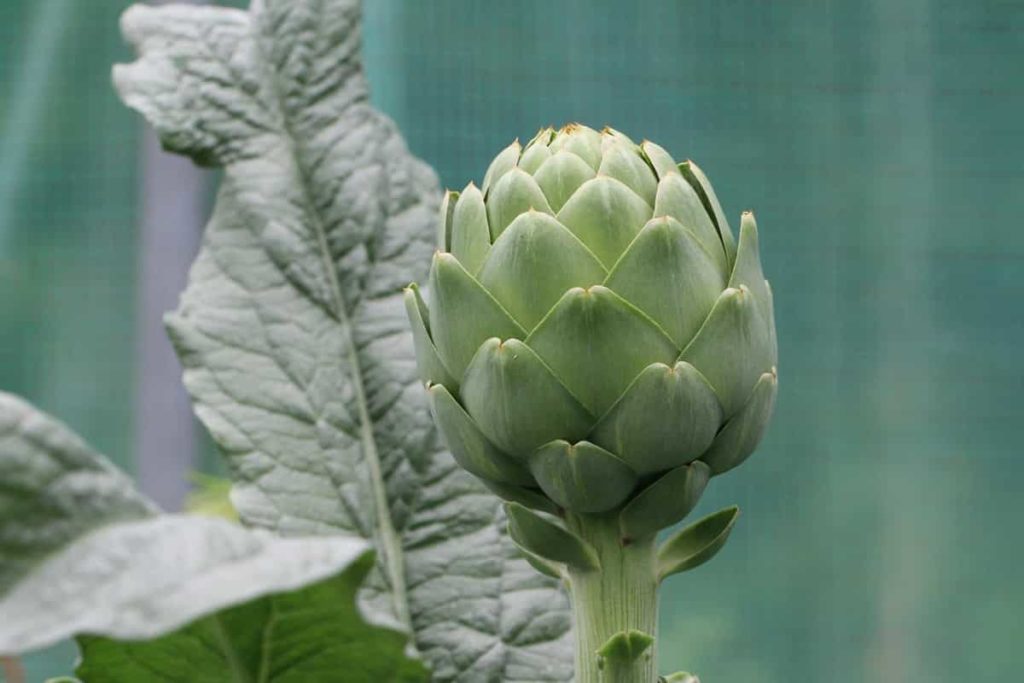
Should I prune my Artichoke plant?
- Annual Artichokes do not need to be cut back because they are replaced in the spring, so cutting back is only necessary where Artichokes are grown as perennial. Cutting back the Artichokes is a straightforward process. Cut the entire plant up to 6 inches in height using strong cutting shears or sharp gardening knives.
- Cut the Artichoke plant thoroughly immediately after cutting its buds at the end of summer. You can do this until the beginning of the fall. Cut each spent stalk that goes down to the ground using cutting. You should mulch the plant with organic, preferably with leaves, straw, or fertilizer.
- You should cut the Artichoke stem back a few inches above the ground once the plant stops producing buds. You should place a thick mulch of leaves or straw on your Artichoke bed to protect the plants from cold winters.
- At the end of August, look at the plants; you can happily cut stalks that have already flowered and any dead/dying leaves.
What grows well with Artichokes?
- Peas are good Artichoke plant companions because they fix nitrogen that Artichokes will leech from the soil. Other good Artichoke plant companions include Sunflower, Tarragon, and Cabbage family members.
- Good Artichoke companion plants include Peas, Cabbage, Sunflower, and Tarragon. These plants will not compete with nutrients. Artichokes grow mostly in the soil but work deeply; nutrient-rich soil filled with organic matter will increase your Artichoke crop.
How do you know when Artichokes are ready to harvest?
- The Artichoke harvest begins in late July or early August and continues well until frost. Buds are usually harvested once they reach full size before the bracts begin to spread open. Harvesting Artichokes requires that you cut the bud with a 3-inch stem. The Jerusalem Artichoke Tuber is not harvested until after the frost when the tubers are dug up from the ground.
- A ripe Artichoke will be dusty green. You may see some light brown splotches on the leaves, but this is normal. However, you should avoid artichokes with purple, deep bruises, or soft brown spots. This usually means that Artichoke is rotten and should be avoided.
- Harvest Artichokes when the buds are tight and firm and about 3 inches in diameter. Harvest buds before petals open. The petals won’t be tender if you wait until the bud opens.
- The main chock bud should be harvested when its diameter is between 3 and 5 inches. If you wait too long, Artichoke becomes tough. Secondary side buds are the best harvested when between 1 and 3 inches in size.
In case you missed it: How to Grow Fig Trees/Fruits from Seed to Harvest: Check How this Guide Helps Beginners

Do Artichokes need lots of water?
- Artichokes require plenty of water, so it’s essential to keep the soil moist but not wet. Typically, an Artichoke plant will need full water between 1 and 3 times a week, depending on your weekly rainfall. 1 to 2 inches of water daily will keep them healthy and thriving. To encourage strong roots, use a thumb-controlled needle nozzle to water deeply 1 to 3 times a week, depending on the season.
- Artichokes require a lot of water to make edible buds. Mulch around plants to keep moisture in the soil. Artichoke plants like to live in moist soil all season. It is possible to give more water to Artichokes and kill their roots. Therefore, only water them when the top 1 inch of soil feels dry. Artichokes require a moderate amount of water to produce tender buds.
Do Artichokes have deep roots?
- Artichokes are deep-rooted and require adequate moisture when growing and producing fruit. Moisture stress can result in a black tip, which is just cosmetic damage as the edible part of the bud is not affected. The black tip is most common in sunny, hot, and airy conditions.
- Artichoke plants have strong roots that are deeper and wider than their size. Their roots are at least 6 inches deep and 3 feet wide in any direction. The roots of the plant are firmly attached to it and are well-fed. It also means that Artichokes need deep garden soil for proper development.
- Place each plant three to four feet apart in rows and leave four to five feet between rows. Plant shoots and dormant roots are about six inches deep. The top should be above ground level.
Why is my Artichoke plant not producing?
- Artichokes also require a lot of moisture for maximum growth. They can survive in drought but won’t produce well without consistent soil moisture. Artichoke plants are usually large and spiny.
- When they are young, Artichokes require nine to 10 days of temperatures below 10°C to make buds and flowers. If your area doesn’t have cold weather or your plant arrives too late in the season, your plants can’t produce buds.
Can Artichoke plants survive frost?
- Artichoke plants are prone to freezing. And they usually don’t make edible flower buds until the second year of their growth. Because of this, starting your foray into growing Artichokes is essential by choosing a hardier variety with a short growing season.
- Once Artichoke plants stop producing buds in the fall, pruning Artichokes helps prepare for overwintering. Just cut the Artichoke stem back a few inches above the ground. You should apply a thick mulch of leaves or straw to your Artichoke bed to protect plants from the cold winter.
- You should protect your Artichokes from frost and welcome them in the spring. Artichokes can grow for 6 to 7 years, and green globe Artichokes are a type that performs well in cold weather.
- You should plant Artichokes in rich potting soil mixed with compost. Instead of heavily mulching plants, you move them to a sheltered area such as an unheated garage or cool cellar with temperatures between 2°C to 10°C. Do not expose Artichokes to temperatures below -6°C in winter.
- Cover the plants with straw, compost, or well-rotted manure mulch to protect the plants in the cold winter weather in cold areas. You should mulch with well-rotted manure or homemade compost when the soil is warm and moist in spring.
In case you missed it: How to Grow Jackfruit from Seed to Harvest: Check How this Guide Helps Beginners
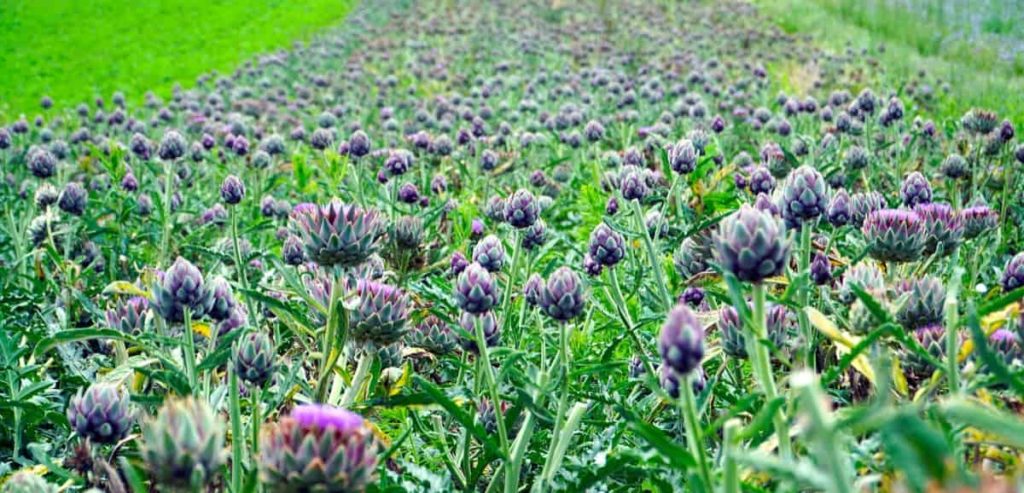
Does Artichoke come back every year?
- Artichokes are perennials that can survive up to 6 years in mild winter areas. Northern gardeners can grow them annually by starting early indoors and then harvesting in the fall. Artichoke is a perennial plant so harvest the plant back to the soil surface after the harvest is done in June.
- Artichoke plants will become dormant in hot weather. When the temperature cools off in late summer and autumn, the plants will start growing again, and you may get a second harvest. Cut the plants by about 6 inches and cover the crowns of the plant with leaves after the fall crop in cold areas.
- In most areas, globe Artichokes must be grown as annuals, where they do not grow back every year but need to be replanted every spring. However, Artichokes can be grown as perennials in mild winter areas, where they only need to be replanted every four to six years.
What kind of fertilizer do Artichokes like?
- Artichokes require high amounts of nitrogen fertilizer for optimal growth and development. Fertilizer is an essential part of healthy, productive Artichokes.
- Use granular fertilizer containing balanced amounts of nitrogen, phosphorus, and potassium so that rich soil Artichokes are needed. Fertilize two teaspoons for each plant, and place it on the edge of the plant at its base.
- In areas where plants can produce throughout the year, they are fed with more nitrogen fertilizer in the fall. Feed in the spring in cold areas. Apply about 45 grams of nitrogen per plant when the new growth of the crown begins.
- Artichokes give heavy feeders, so for each plant, work on a cup of complete organic fertilizer or shovel of compost or aged chicken manure in the ground. You can also apply one or two cups to each feather or blood meal and bone meal for each plant.
What are the little black bugs on my Artichoke plant?
- You can find several types of aphids on Artichoke plants. These aphid types vary in color (from light green to black), size, and shape. All are soft-body insects.
- You can squish them, wash them with harsh water or spray them with insecticidal soap and dilute them as directed. Whatever your choice, repeat as needed, perhaps every several days.
- Spray under your Artichoke leaves in the morning until the aphids are removed with a high-power setting on your hose. Low-power settings or watering will not properly remove the aphids.
- Spray your Artichoke plant with a systemic pesticide that contains the chemical imidacloprid early in the morning. It is a commercial chemical non-toxic to humans and beneficial to pollinators but deadly to harmful insects such as aphids.
In case you missed it: How to Grow Radish from Seed to Harvest: Check How this Guide Helps Beginners
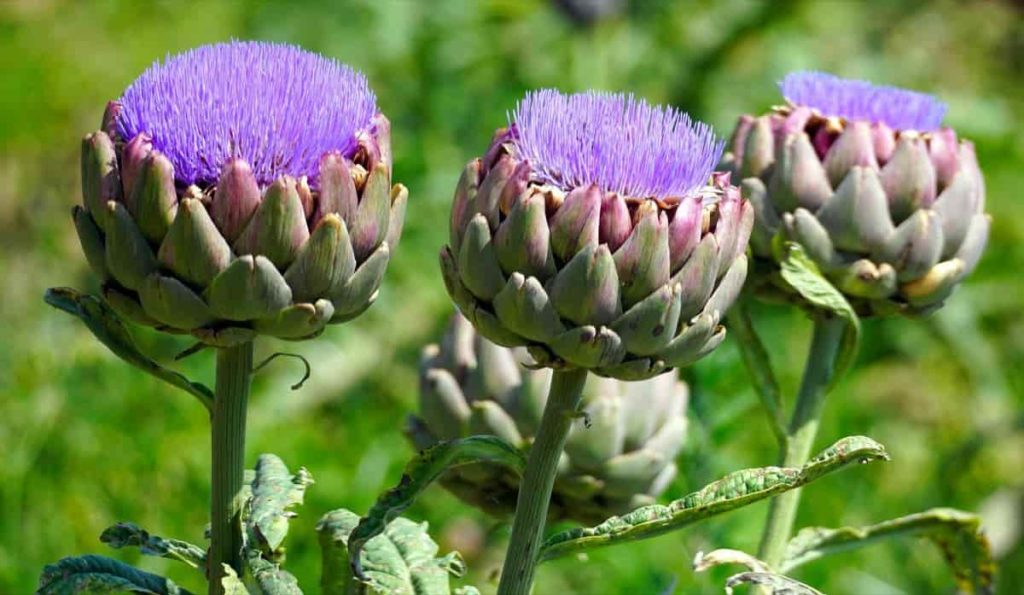
What kind of soil do Artichokes need?
- Artichokes are heavy feeders. Mix the shovel of compost or aged manure for each plant in the soil before planting. They need consistent moisture but don’t like to live in water-logged soil.
- Globe Artichoke produces the best in deep, fertile, well-drained soils but will grow in a wide range of soils. The plant’s deep roots need relatively deep soil with an adequate volume for the growth of the roots. You should avoid sandy soil with excessive drainage.
- Artichokes prefer sandy, well-drained fertile soils. Slightly alkaline soil is ideal. Good drainage is essential to prevent roots from rotting, especially in areas where the winter will be high. However, the soil should retain water long enough to allow the roots to take it in in the hot summer.
- When growing Artichoke perennials, it is special to amend the soil before planting to ensure they grow well in future years. You should consider growing your Artichokes in raised beds if your garden soil is poor.
Should I let my Artichoke flower?
- Artichoke flowers are not edible once they begin to bloom. Buds must be cut if you want to eat them while they are still tightly packed. If the bud starts blooming, it becomes complicated and fibrous, so it is better to leave it to bloom so you can enjoy the beautiful flowers. The edible bud parts are the tender base of the leaves and the fleshy base on which the flowers are borne.
- Although most gardeners consider Artichokes as food, Artichoke buds make large pink or purple thistle-like flowers if left unharvested. The flowers, while not edible, give interesting colors and textures for arrangements and cutting bouquets.
Do Artichokes grow well in containers?
- You can grow Artichoke for their edible flower buds. Depending on the variety, you can grow them as annuals or perennial plants. They are grown outside throughout the year and harvested in the spring in a warm Mediterranean climate. However, if you have space, you can grow indoors.
- To grow Artichokes in containers, you need a large container. A large container can hold enough space for plants to grow. The ideal container size to grow Artichokes should be 24 inches deep and 38 inches wide; this size can give enough space to expand its root system.
Conclusion
Growing Artichokes from seeds take some work and patience, but it’s worth the effort. In winter, artichokes require good soil, regular water, feeding, and frost protection. Before frost, cut 6 inches long and mulch with soil, straw, or leaves to prevent the root from freezing. The branches of these plants should be established in the spring so that you can replace the old plants after a few years. By giving the needs of the Artichoke plant, you will be rewarded with a bountiful harvest within a few months.
- Seasonal Flower Gardening: Best Practices for Spring, Summer, Fall, and Winter
- How to Grow Hibiscus from Flower
- Plantation Ideas for Home Decoration: A Beginners Guide
- Flower Garden Designs and Layouts for Beginners
- Planting and Spacing Techniques in Papaya: A Beginner’s Guide
- Growing Gold: Essential Techniques for Planting Pineapples
- How to Make Kalanchoe Plant Bushy: Home Remedies and Solutions
- 11 Reasons Why Your Gardenia is Not Blooming: Home Remedies and Solutions
- Eco Elegance: The Guide to Designing a Drought-Tolerant Landscape
- Gardening on a Slope: Strategies for Hillside Landscaping
- Nourish and Flourish: Top Organic Mulches for Thriving House Plants
- Everything You Want to Know about Indian Mogra Flower: Discover Uses and Growing
- Green Thumb Success: Expert Tips for Cultivating Greenhouse Pumpkins All Year Round
- Maximize Growth & Flavor: The Ultimate Guide to Companion Planting in Herb Gardens
- How to Control Rhododendron Problems Naturally: Home Remedies and Organic Ways to Fix Them
- Natural Magic: The Remarkable Benefits of Cinnamon for Plants
- Best Steps to Revive Dying Tulip with Natural and Organic Treatment
- 10 Reasons Why Your Angel Trumpet is Not Blooming: Remedies and Treatment
- How to Fix Periwinkle Leaf and Flower-Related Problems: Natural Remedies and Solutions
- How to Fix Zinnias Leaf and Flower Problems: Discover Natural and Home Remedies
- Organic Steps to Induce Lemon Tree Flowers: A Comprehensive Guide
- Bloom Booster: Crafting the Perfect Homemade Bougainvillea Fertilizer
- Optimizing Growth: A Guide to Applying NPK Fertilizer for Potted Plants
- 10 Best Homemade Fertilizers for Rubber Plant: DIY Recipes and Application Method
- How to Boost Female Pumpkin Flowers: Effective Steps for More Flowers and High Yields
- Transform Your Indoor Garden: Top Benefits of Pink Salt for Houseplants
- 10 Best Homemade Fertilizers for Peacock Plants (Calathea): Easy DIY Guide
- Unlock Blooms: 9 Reasons Why Your Potted Chrysanthemum is Not Blooming
- 8 Reasons Why Your Potted Hibiscus is Not Blooming: Fix it with Simple Solutions
- Unlock Blooms: 9 Key Reasons Your Potted Frangipani Won’t Flower
- 10 Reasons Why Is My Ice Plant Not Blooming: Remedies and Treatment
- 10 Reasons Why My Potted Hydrangea Not Blooming: Treatment and Remedies
- 10 Reasons Why is My Wisteria Not Blooming: Remedies and Treatment
- 10 Reasons Why is My Goldfish Plant Not Blooming: Remedies and Treatment
- Maximize Your Space: Ultimate Guide to Balcony Gardening with Grow Bags
- 10 Reasons Why Your Iris is Not Blooming: Remedies and Treatment